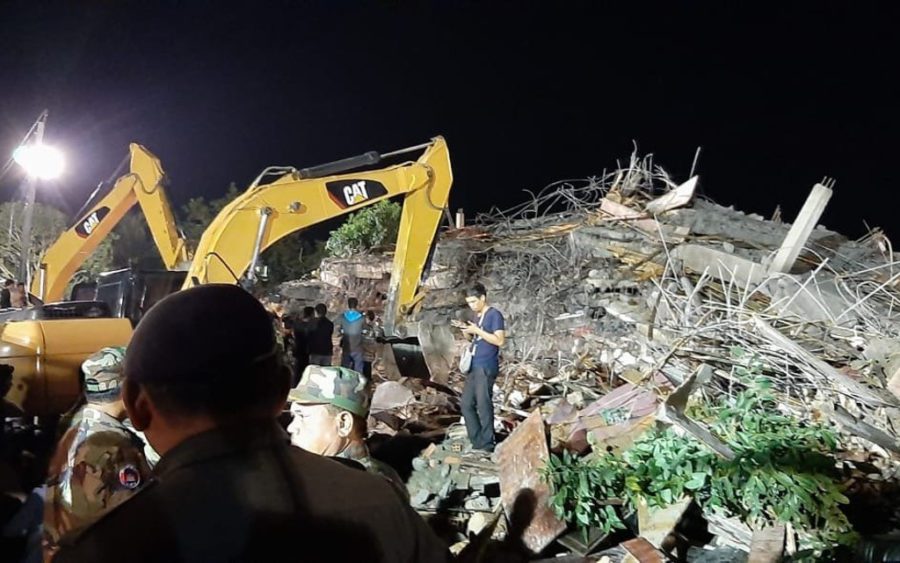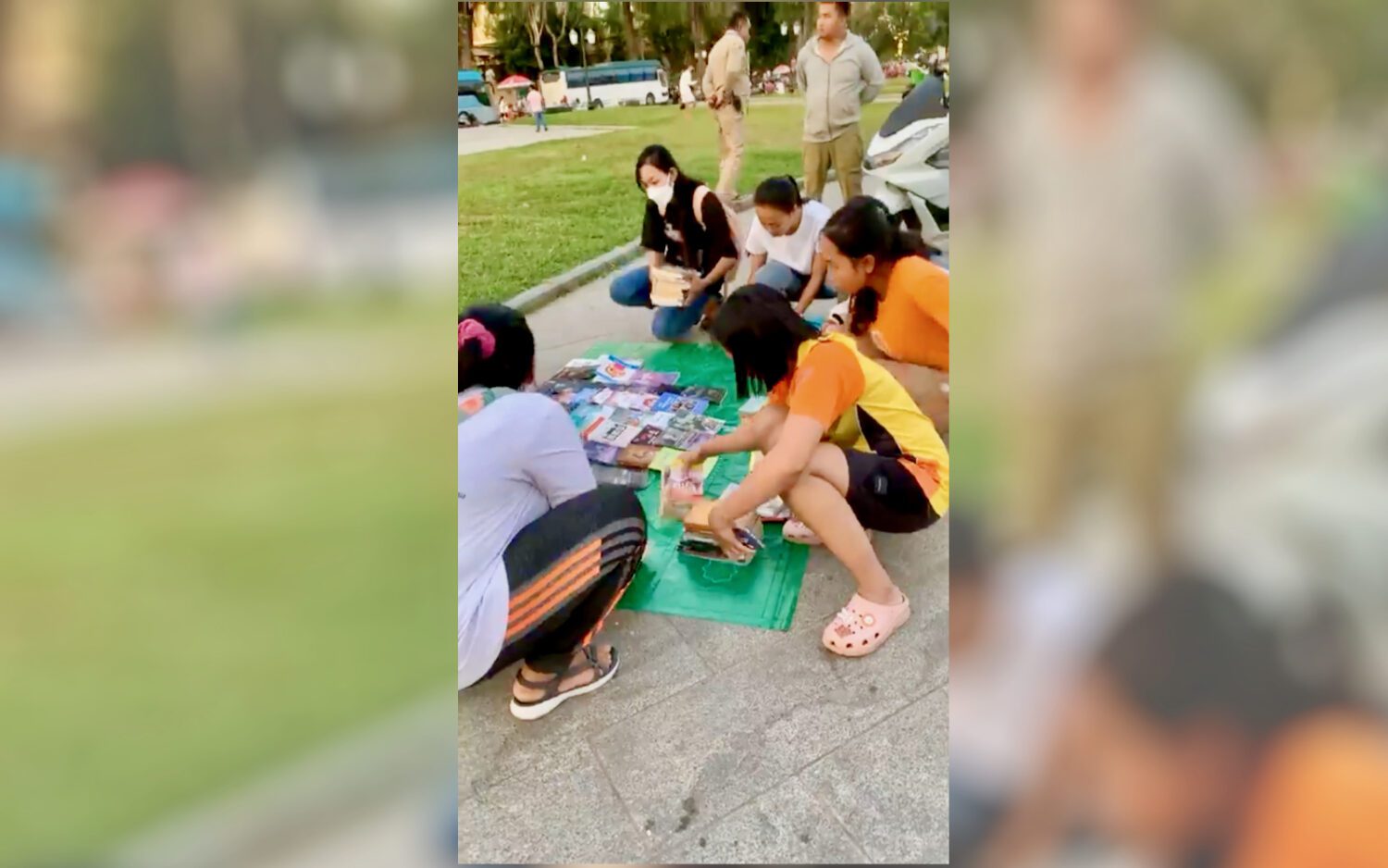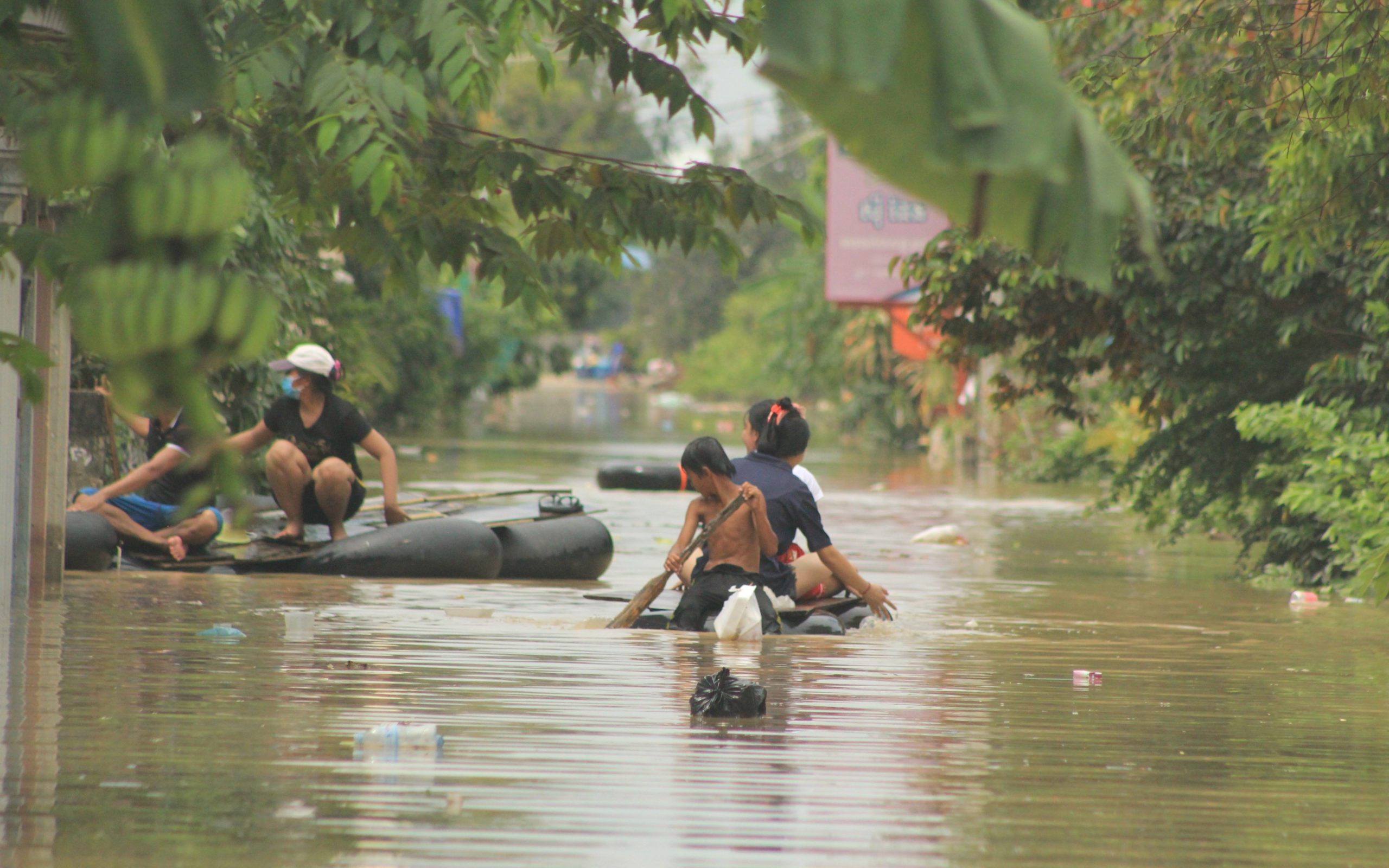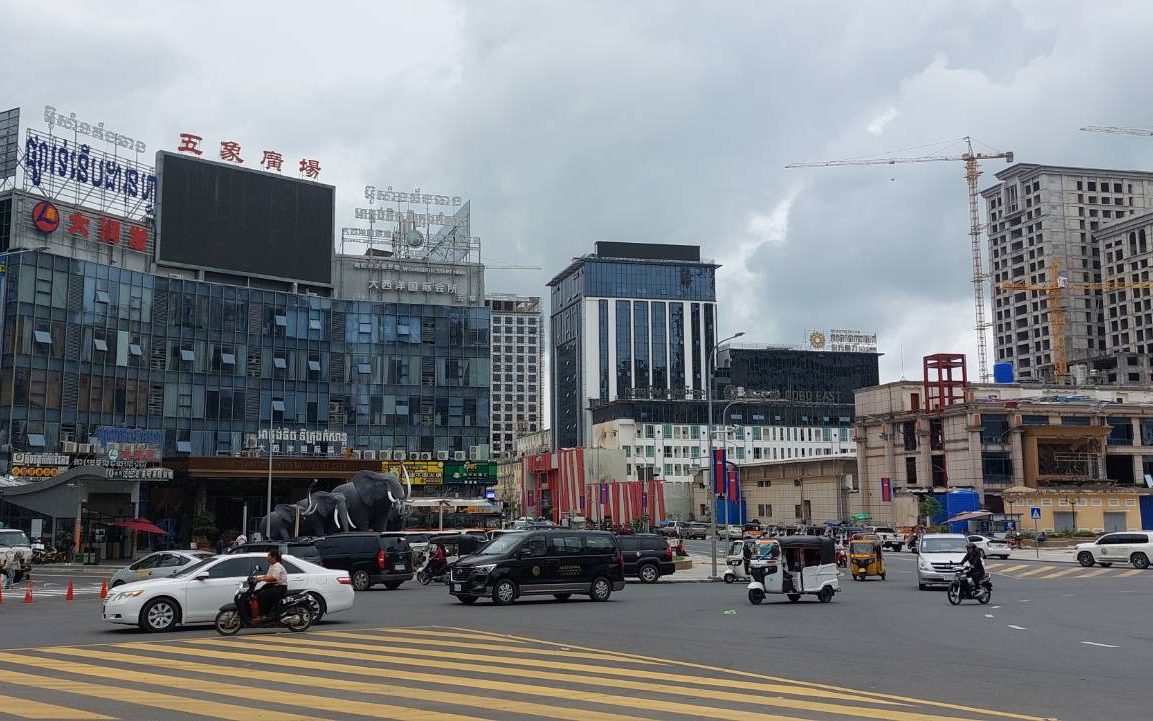Officials in Kep province, where 36 people were killed when an unfinished building collapsed on them last week, said the construction had various technical failures — from using incorrect materials to building too many floors — and diverged from what the building permit allowed.
A defense lawyer for the building’s owners, however, denied that it was more stories than it was supposed to be, and said his clients were not criminally responsible, but had agreed to pay compensation to the victims.
The building, owned by Ek Sarun and his wife Chhiv Sothy, fell on January 3 in Kep city, killing workers and family members inside, including six children, and injuring 23 other people who were pulled from the debris for three days by rescuers.
The couple were released on bail this week after being charged with manslaughter and causing injury. A court spokesman said they were under court restrictions and not allowed to leave the country.
Soth Puthi Manin, a deputy director of the provincial land management department, told VOD on Wednesday that the building had seven floors, including a mezzanine level on the ground floor, but owners had requested a permit for a five-story building.
The mezzanine slabs, which were not included in the building permit request, were added after the fourth floor had been built, Puthi Manin said.
“It’s wrong. Technically wrong. It is completely wrong,” he said.
Lay Vannara, another deputy director of Kep’s land management department, told VOD on Monday that the building began construction five months before the Kep provincial governor signed off on the permit in August.
He also said the builders had been permitted to construct a six-story building. It was unclear why Vannara told VOD that the permit was for a six-story building, while his colleague, Puthi Manin, later said the permit was for a five-story building.
Hours after the building fell the Kep provincial administration said that it was six stories while most media outlets, including VOD, reported that the building was seven.
In a photo of the building before it collapsed, which was published by government-aligned Fresh News on January 3, the building is seen to have seven floors, including the ground floor and a top floor with a partial roof.
Defense lawyer Kong Sam Onn, however, disputed that the unfinished building had seven floors, calling the provincial administration’s statement and media reports incorrect.
Sam Onn argued that the ground floor and rooftop terrace should not be counted as floors of the building.
“In fact, it is not seven floors. It is five floors,” he told VOD.
“Why do we have to count it as five floors? Because the ground floor is not counted. [It] is not counted as a floor, and the rooftop, it is called a terrace. That is not counted as a floor,” he said.
The lawyer admitted that the builders started construction before receiving a permit, but said that they were just laying the foundation.
“In fact, the construction had been done after requested but the request was not decided … because there was a negotiation with the authorities,” Sam Onn said.
“The construction within those few months was just the preparation of the land and it did not mean that the construction had started five months before requesting permission,” he added.
Sam Onn also said his clients would not accept criminal responsibility, since they were not responsible for the technical construction work, but they would pay civil compensation.
In the aftermath of the 36 deaths, Land Management Minister Chea Sophara created an 11-member ad hoc group to assess the quality of the building’s construction.
Land management official Puthi Manin said he had participated in the assessment and the results had been sent up the government chain of command.
The group found that only eight steel reinforcing rods were used in the construction of each concrete pillar while building standards called for 16 steel rods in each pillar, according to Puthi Manin.
Cement plaster intended for walls was also found to have been used for the floor slabs, he said.
In addition, the removal of support scaffolding too soon also contributed to the building collapse, Puthi Manin said.
Sam Onn, the lawyer, said the building, which was valued at more than $400,000, was developed on a plot of about 600 square meters and was built for his clients’ five children.
However, Kep provincial governor Ken Satha expressed doubt that the building was meant to house the owners’ family, claiming it was built for a commercial purpose.
“It is a communal accommodation,” like a condo, Satha said. “That is already a commercial building.”
He said the couple had also built and operated a guesthouse in Preah Sihanouk province.
(Translated and edited from the original article on VOD Khmer)













